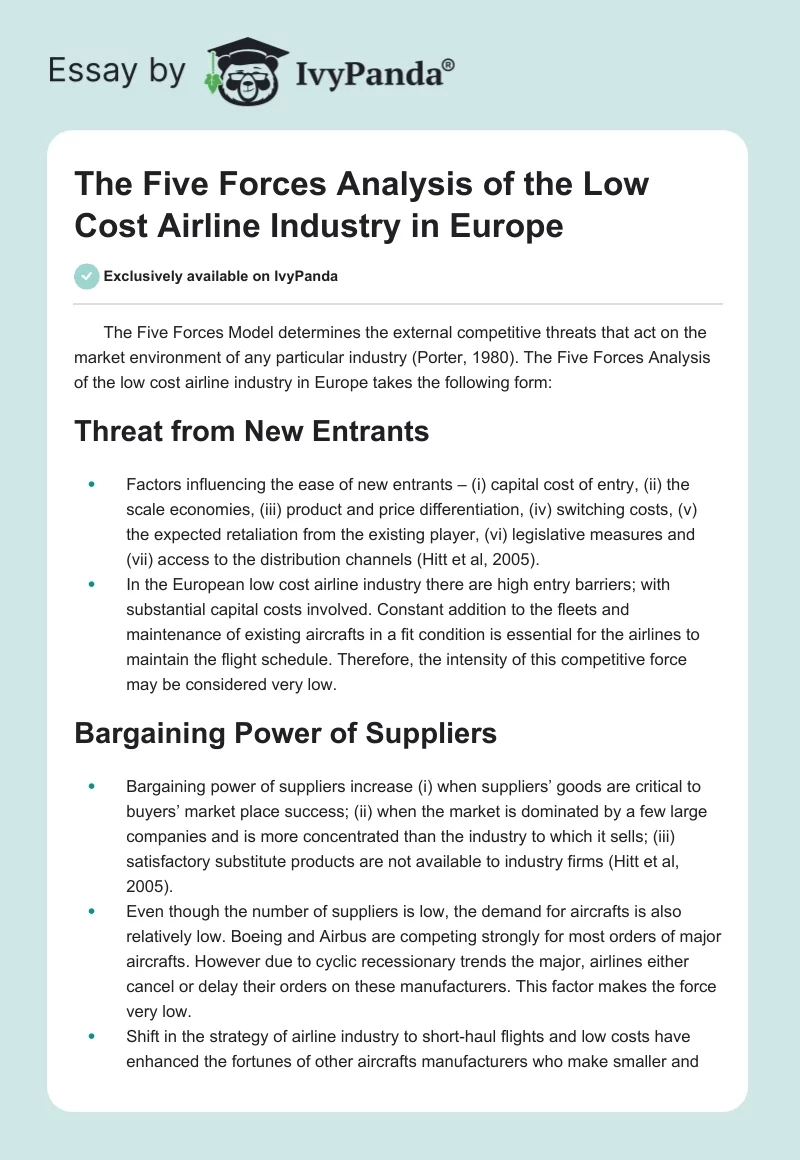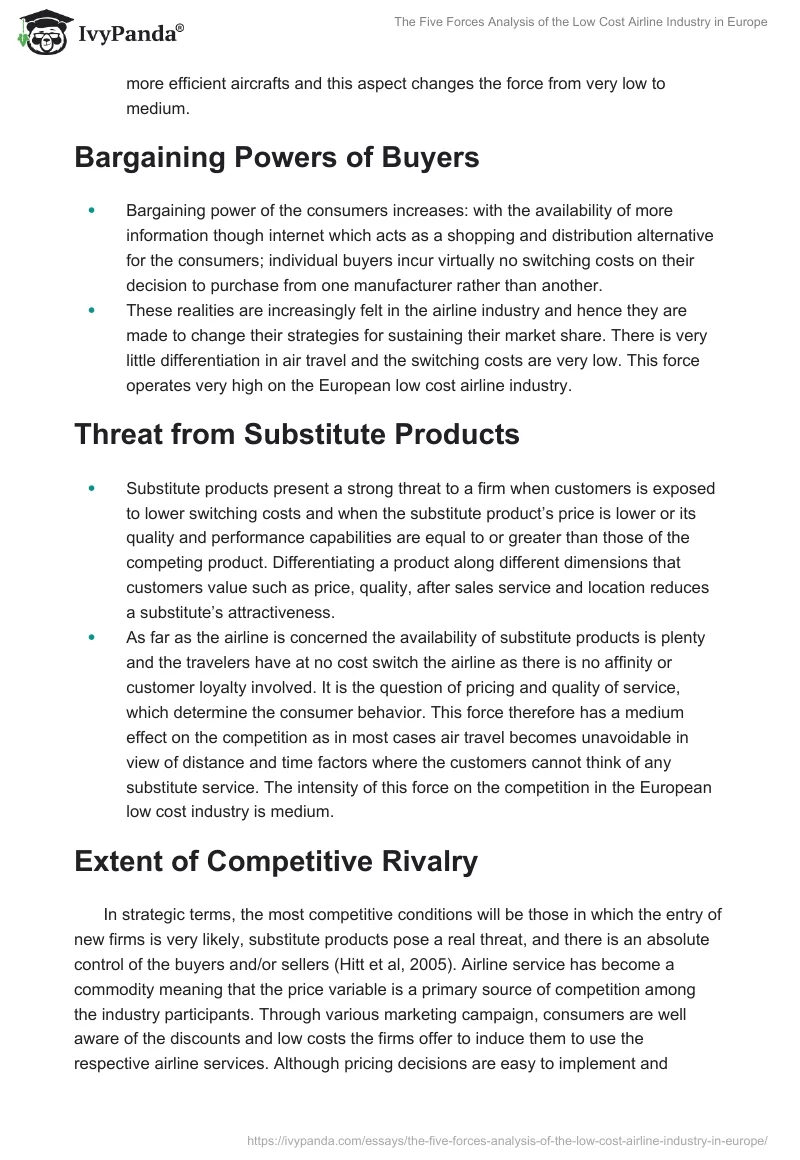The Five Forces Model determines the external competitive threats that act on the market environment of any particular industry (Porter, 1980). The Five Forces Analysis of the low cost airline industry in Europe takes the following form:
Threat from New Entrants
Factors influencing the ease of new entrants –
- capital cost of entry,
- the scale economies,
- product and price differentiation,
- switching costs,
- the expected retaliation from the existing player,
- legislative measures and
- access to the distribution channels (Hitt et al, 2005).
In the European low cost airline industry there are high entry barriers; with substantial capital costs involved. Constant addition to the fleets and maintenance of existing aircrafts in a fit condition is essential for the airlines to maintain the flight schedule. Therefore, the intensity of this competitive force may be considered very low.
Bargaining Power of Suppliers
Bargaining power of suppliers increase
- when suppliers’ goods are critical to buyers’ market place success;
- when the market is dominated by a few large companies and is more concentrated than the industry to which it sells;
- satisfactory substitute products are not available to industry firms (Hitt et al, 2005).
Even though the number of suppliers is low, the demand for aircrafts is also relatively low. Boeing and Airbus are competing strongly for most orders of major aircrafts. However due to cyclic recessionary trends the major, airlines either cancel or delay their orders on these manufacturers. This factor makes the force very low.
Shift in the strategy of airline industry to short-haul flights and low costs have enhanced the fortunes of other aircrafts manufacturers who make smaller and more efficient aircrafts and this aspect changes the force from very low to medium.
Bargaining Powers of Buyers
- Bargaining power of the consumers increases: with the availability of more information though internet which acts as a shopping and distribution alternative for the consumers; individual buyers incur virtually no switching costs on their decision to purchase from one manufacturer rather than another.
- These realities are increasingly felt in the airline industry and hence they are made to change their strategies for sustaining their market share. There is very little differentiation in air travel and the switching costs are very low. This force operates very high on the European low cost airline industry.
Threat from Substitute Products
- Substitute products present a strong threat to a firm when customers is exposed to lower switching costs and when the substitute product’s price is lower or its quality and performance capabilities are equal to or greater than those of the competing product. Differentiating a product along different dimensions that customers value such as price, quality, after sales service and location reduces a substitute’s attractiveness.
- As far as the airline is concerned the availability of substitute products is plenty and the travelers have at no cost switch the airline as there is no affinity or customer loyalty involved. It is the question of pricing and quality of service, which determine the consumer behavior. This force therefore has a medium effect on the competition as in most cases air travel becomes unavoidable in view of distance and time factors where the customers cannot think of any substitute service. The intensity of this force on the competition in the European low cost industry is medium.
Extent of Competitive Rivalry
In strategic terms, the most competitive conditions will be those in which the entry of new firms is very likely, substitute products pose a real threat, and there is an absolute control of the buyers and/or sellers (Hitt et al, 2005). Airline service has become a commodity meaning that the price variable is a primary source of competition among the industry participants. Through various marketing campaign, consumers are well aware of the discounts and low costs the firms offer to induce them to use the respective airline services. Although pricing decisions are easy to implement and reverse since the competitors can easily imitate them, it allows only a temporary competitive advantage. Competing principally based on price has the potential to reduce substantially the ability of the low cost airlines in Europe to operate profitably and eliminates the possibility of winning consumer loyalty. In general, the competitive scenario in the low-cost airline industry appears to in the range of medium to high in Europe.
Bibliography
Hitt, M.A., Ireland, R.D. & Hoskinson, R.E., 2005. Strategic Management Competitiveness and Globalization. Versailles KY: Thomson South Western.
Porter, M., 1980. Competitive Strategy: Techniques for Analyzing Industris and Competotors. London: Free Press.


